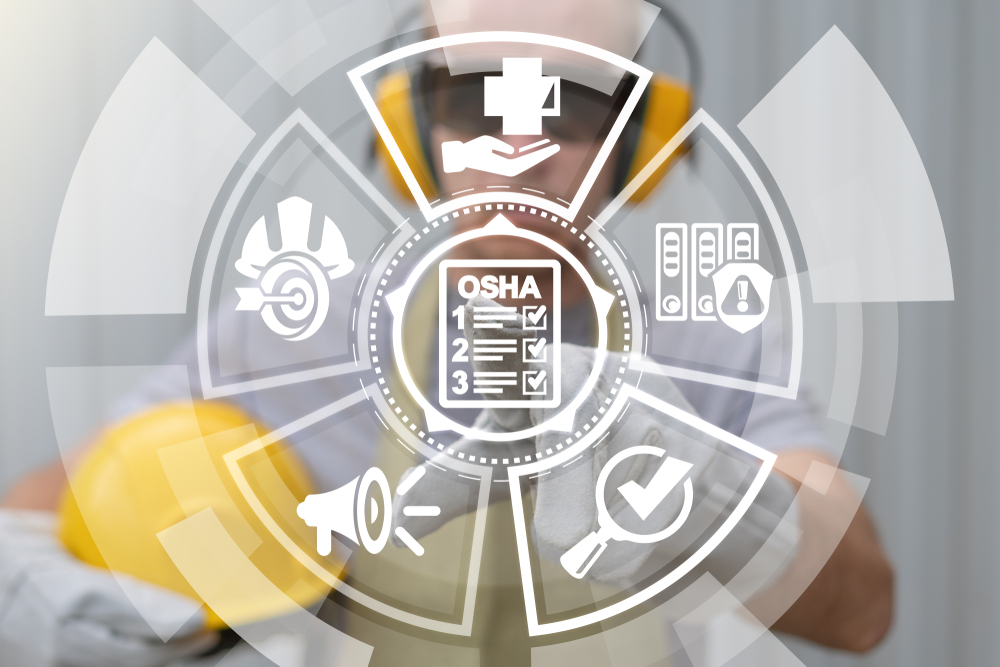The Occupational Safety and Health Administration’s (OSHA) construction industry fall protection standard was the agency’s most frequently cited standard for the 13th straight year, the agency announced October 24 at the National Safety Council’s (NSC) Safety Congress & Expo in New Orleans.
Eric Harbin, OSHA’s Region 6 (Dallas) administrator, unveiled preliminary data for the agency’s top 10 most cited standards. The Fall Protection–General Requirements standard was followed by the Hazard Communication and Ladders standards.
The top 10 most frequently cited workplace safety and health standards for fiscal year (FY) 2023, which ended September 30, were:
- Fall Protection—General Requirements (29 Code of Federal Regulations (CFR) §1926.501): 7,271 violations;
- Hazard Communication (§1910.1200): 3,213 violations;
- Ladders (§1926.1053): 2,978 violations;
- Scaffolding (§1926.451): 2,859 violations;
- Powered Industrial Trucks (§1910.178): 2,561 violations;
- Lockout/Tagout (§1910.147): 2,554 violations;
- Respiratory Protection (§1910.134): 2,481 violations;
- Fall Protection—Training Requirements (§1926.503): 2,112 violations;
- Personal Protective and Lifesaving Equipment—Eye and Face Protection (§1926.102): 2,074; and
- Machine Guarding (§1910.212): 1,644 violations.
“Although incredible advancements are made in safety each year, we continue to see many of the same types of violations appear on OSHA’s Top 10 list,” Lorraine Martin, the NSC’s president and CEO, said in a statement. “As a safety community, we must come together to acknowledge these persistent trends and identify solutions to better protect workers.”
Last year, respiratory protection was third on OSHA’s top 10 list for FY 2022 but dropped to 7th on this year’s list. All 10 OSHA standards on this year’s list appeared on last year’s list.
Earlier this year, the agency instituted an enforcement policy allowing for “instance-by-instance” citations for “high-gravity,” serious violations of the fall protection standard, as well as the standards for lockout/tagout, machine guarding, permit-required confined space, respiratory protection, and trenching.
This past spring, OSHA launched a National Emphasis Program (NEP) of outreach and enforcement for falls from height across all industries. Enforcement policy under the NEP allows OSHA compliance safety and health officers (CSHOs) to open inspections whenever they observe someone working at heights during their normal workday travel or during other OSHA inspections.
While fall protection remains the most frequently cited standard and fall protection training is the eighth most frequently cited standard, falls from height are one of the “Fatal Four” safety hazards, along with caught-in or -between, electrocution, and struck-by hazards.
Work-related fatalities due to falls, slips, and trips increased from 805 fatalities in 2020 to 850 in 2021, the Bureau of Labor Statistics (BLS) announced last year. Falls, slips, and trips in construction and extraction occupations accounted for 370 fatalities in 2021—an increase of 7.2 percent from 2020.
Falls to a lower level also cost employers $6.09 billion annually in lost productivity and medical claims, according to Liberty Mutual’s recently released Workplace Safety Index.
The most frequently cited general industry standard is OSHA’s hazard communication standard, sometimes referred to as “worker right-to-know,” which includes requirements for chemical labels, safety data sheets (SDSs), and worker training. OSHA regularly cites both host employers and staffing companies in multiemployer workplaces; both employers are responsible for worker education, information, and training.
The NSC is a not-for-profit organization focused on preventing deaths in the home, in the workplace, and on the roadways.

